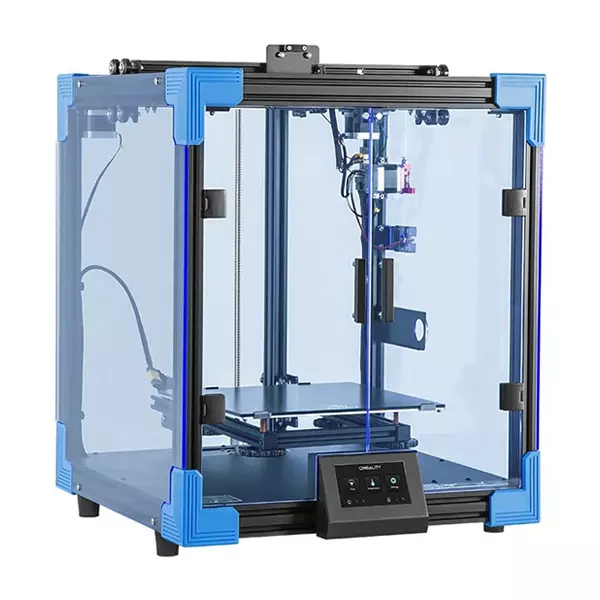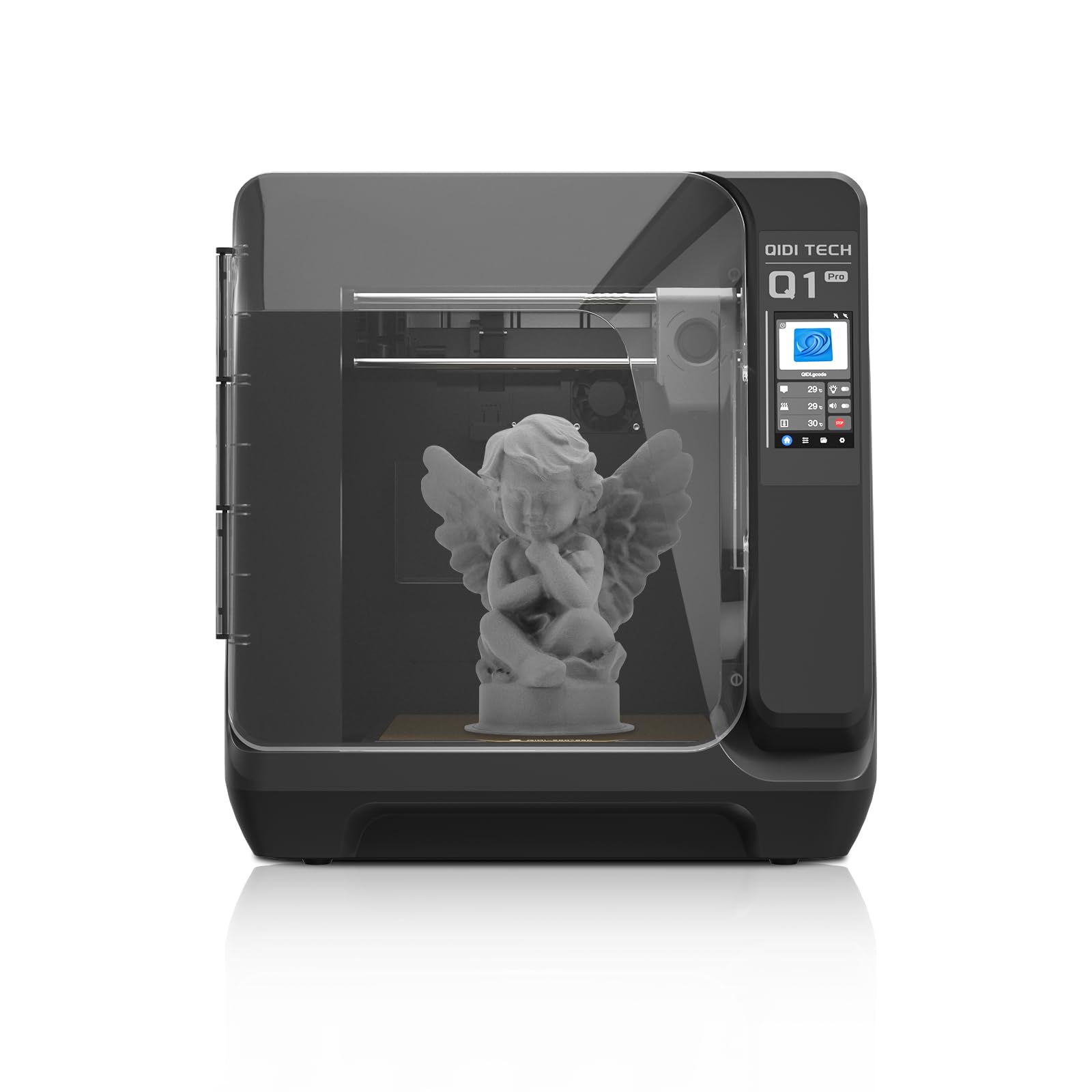Compare Ender 6 vs Q1 PRO
Comparison between the best 3D printers
Choose the best 3D printer at the best price. The cheapest 3D printers are here.
Buy a 3D printer here with 3D Fila.
 |
 |
|
| Model | Ender 6[BUY Ender 6] |
Q1 PRO[BUY Q1 PRO] |
| Printing Material | Filament | Filament |
| Buy Filament for Creality 3D Ender 6 | Buy Filament forQIDI Q1 PRO | |
| Estimated price | $499,00 | $449,00 |
| Manufacturer | Creality 3D | QIDI |
| Release Year | 2020 | 2024 |
| Print Volume [mm] | 250x250x400 | 245x245x245 |
| Printer Size [mm] | 495x495x650 | 467x477x489 |
| Weight [kg] | 22 | 20 |
| Power Loss Recovery | YES | YES |
| Enclosed printer | YES | YES |
| Bed Leveling | Manual | Automatic |
| Filament End Sensor | YES | YES |
| Bed type | Heated | Heated |
| Power supply system | Bowden | Direct Drive |
| Standard nozzle | 0,4 | 0,4 |
| Maximum Nozzle Temperature [°C] | 260 | 350 |
| Maximum Bed Temperature [°C] | 100 | 120 |
| Maximum printing speed [mm/s] | 150 | 600 |
| Filament holder | YES | YES |
| Camera for supervision | NO | NO |
| Recommended filaments | PLA, TPU, ABS, PETG | PLA、ABS、ASA、PETG、TPU、PC、PA、PA-CF、PET-CF、PAHT-CF etc. |
| Recommended slicers | Cura, Simplify, Slic3r | QIDI Slicer/Cura/Simplify 3D/ORCA/PRUSA Slicer |
| Maximum Resolution [mm] | 0,1 | 0,1 |
| Processor | 32 bits | Cortex-A53,64-bit Processor |
| Display | Touchscreen TFT 4,3'' | Touchscreen 4,3'' |
| Power Supply | 24V / 504W | 350 W |
| Connectivity | SD / USB | WiFi/USB Flash Drive/Ethernet Cable |
| Operating systems | Windows, Mac, Linux | Windows, Linux, Macbook |
| Date of registration in the system | 2021-04-15 | 2024-07-09 |
| Release date | 2020 | 2024 |
| Extra features | The Creality Ender 6 stands out in the world of 3D printers with its CoreXY system, offering fast and high-quality prints. With a robust design, it has acrylic panels to protect against air currents, optimizing the printing of materials that require higher temperatures. It features a generic Creality hotend, effective up to ~240°C. Its differentials include 10mm GATES belts, promoting stability at high speeds, and a 360W power supply for reliable performance. The machine also has an intuitive user interface through a 4.3-inch touchscreen. | The QIDI Q1 Pro 3D printer stands out for its Core XY structure and heating chambers that reach up to 60ºC, ideal for advanced materials such as ABS and Nylon. It features Klipper firmware, an automatic leveling system, a high-flow extruder with a double metal nozzle and a hotend that reaches 350ºC. It offers connectivity via Wi-Fi, USB and Ethernet, as well as a 1080p camera for remote monitoring and an intuitive touchscreen for easy operation. |
| Support for multiple colors and materials (AMS and CFS) | NO | NO |
Notes * |
||
| Cost-benefit | 7 / 10 | 8 / 10 |
| Hardware | 2.5 / 10 | 4.8 / 10 |
| Tela | . | . |
| Print volume | 4 / 10 | 3 / 10 |
| Performance | 1 / 10 | 5 / 10 |
| [BUY Ender 6] | [BUY Q1 PRO] |
Conclusion |
| In comparing the Creality Ender 6 and the QIDI Q1 Pro, it becomes evident that both printers have been designed to cater to specific user needs and preferences within the 3D printing space. The Ender 6, with its robust construction, manually leveled bed, and solid performance up to 260°C, primarily serves users who may prioritize reliability and stability in printing basic to moderate materials. While it offers a larger print volume and is equipped with a well-regarded Bowden-style extruder, its overall performance can be regarded as more traditional, with a lower maximum printing speed compared to the Q1 Pro. Conversely, the QIDI Q1 Pro, being the newer model, brings substantial advancements to the table. It features an automatic bed leveling system, a direct drive extruder for better material handling, and is capable of reaching significantly higher temperatures, making it suitable for a broader range of advanced filament types. Its impressive maximum printing speed also enhances overall productivity. Additionally, with modern connectivity options (Wi-Fi and Ethernet) and an intuitive interface, it offers greater ease of use, particularly for users looking to integrate their printing in more digitally connected environments. While the Ender 6 offers a commendable price-to-performance ratio, the QIDI Q1 Pro provides superior technology and versatility, reflecting its slightly higher price point. Ultimately, the choice between the two should hinge on the user's specific needs: the Ender 6 is well-suited for those who need basic functionality and reliability for common materials, whereas the QIDI Q1 Pro caters to more advanced users looking for cutting-edge features and better performance across a wider array of materials. |

